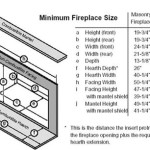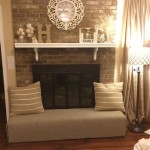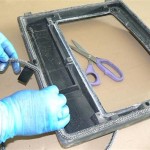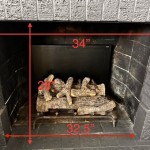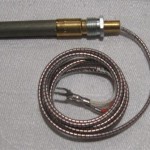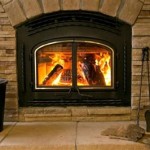Fireplace Mantel Surround Designs: A Comprehensive Guide
The fireplace, traditionally a focal point in the home, offers warmth and ambiance. The mantel surround, the decorative framework around the fireplace opening, plays a significant role in defining the overall style and character of the space. Selecting the appropriate mantel surround design involves considering various factors, including the architectural style of the home, personal preferences, material choices, and functional requirements. This article explores diverse fireplace mantel surround designs, providing insights into their characteristics, applications, and key considerations.
Understanding the Purpose of a Mantel Surround
The primary purpose of a fireplace mantel surround extends beyond mere aesthetics. It serves several crucial functions:
Architectural Enhancement: The surround frames the fireplace opening, visually anchoring it within the room. A well-designed surround complements the existing architectural style, whether it's a classic, modern, or rustic design. It can enhance the perceived scale of the fireplace, making it appear grander or more intimate, depending on the design elements employed.
Material Definition: The choice of material for the mantel surround determines its textural and visual impact. Different materials, such as wood, stone, brick, or metal, impart distinct characteristics. The material selected should harmonize with the surrounding décor and withstand the heat generated by the fireplace.
Safety and Protection: The surround offers a measure of protection to the wall surrounding the fireplace. It acts as a barrier against heat exposure, preventing potential damage to drywall, paint, or wallpaper. In some designs, a non-combustible material directly surrounding the firebox is required by building codes. This protects adjacent combustible mantels. A hearth, often integrated into the surround design, prevents embers or sparks from damaging flooring.
Display and Storage: The mantel shelf, the horizontal surface atop the surround, provides a platform for displaying decorative items, photographs, and artwork. The surround itself may incorporate built-in shelves or cabinets for additional storage, particularly in rooms where space is limited. The mantel serves as a focal point for seasonal decorations, such as holiday ornaments or floral arrangements.
Exploring Different Mantel Surround Styles
Mantel surround designs encompass a wide variety of styles, each characterized by specific aesthetic elements and historical influences:
Traditional Mantel Surrounds: Traditional mantels often feature elaborate detailing, such as ornate carvings, fluted pilasters, and dentil molding. These designs draw inspiration from classical architectural styles, including Georgian, Victorian, and Federal. Materials commonly used in traditional mantels include wood, marble, and cast stone. The focus is on symmetry, balance, and a sense of formality. Dark wood finishes are common, although painted white or cream finishes are also frequently used.
Modern Mantel Surrounds: Modern mantels prioritize clean lines, minimalist forms, and a focus on functionality. These designs often incorporate geometric shapes, such as rectangles, squares, and circles. Materials used in modern mantels include concrete, metal, glass, and smooth wood. The emphasis is on simplicity and a pared-down aesthetic. Colors tend to be neutral, such as white, gray, or black. Some modern mantels incorporate integrated lighting to enhance the visual appeal.
Rustic Mantel Surrounds: Rustic mantels embrace natural materials and a sense of ruggedness. These designs often feature exposed wood beams, rough-hewn stone, and reclaimed materials. The focus is on creating a warm and inviting atmosphere. Rustic mantels often incorporate elements such as stacked stone, brick, or reclaimed wood. The color palette tends to be earthy, with browns, greens, and grays dominating. Accents may include wrought iron or hammered metal.
Contemporary Mantel Surrounds: Contemporary mantels represent a blend of modern and traditional styles, incorporating elements from both. These designs often feature clean lines and simple forms, but may also incorporate subtle decorative details. Materials used in contemporary mantels include wood, stone, metal, and glass. The emphasis is on creating a balanced and harmonious aesthetic. Colors tend to be neutral or muted, with pops of color used sparingly.
Transitional Mantel Surrounds: Transitional mantels bridge the gap between traditional and contemporary styles, blending classic elements with modern sensibilities. These designs often feature a mix of materials, such as wood and stone, or wood and metal. The focus is on creating a timeless and versatile look. Transitional mantels often incorporate architectural details, such as crown molding or wainscoting, but in a more streamlined and understated manner. The color palette tends to be neutral, with warm tones used to create a sense of comfort.
Floating Mantel Surrounds: A floating mantel is essentially a mantel shelf that appears to be suspended from the wall without visible supports. These are most often made of wood, concrete, or stone. They are attached using hidden brackets or supports within the wall. Floating mantels offer a clean, minimalist look, suitable for modern or contemporary spaces. They can be paired with a variety of fireplace surrounds or used as a standalone decorative element above the firebox.
Selecting the Right Materials for Your Mantel Surround
The choice of material for the fireplace mantel surround directly influences its aesthetic appeal, durability, and maintenance requirements:
Wood: Wood is a versatile and widely used material for mantel surrounds. It offers a warm and inviting aesthetic and can be easily shaped and carved to create intricate designs. Hardwoods, such as oak, maple, and cherry, are durable and resistant to wear and tear. Softer woods, such as pine and cedar, are more affordable but may require more frequent maintenance. Wooden mantels can be stained, painted, or finished with a clear coat to enhance their natural beauty. It's crucial to adhere to safety precautions and building codes regarding combustible materials near the fireplace opening. Wood mantels must be placed a safe distance from the firebox or protected by a non-combustible material.
Stone: Stone is a durable and elegant material that adds a sense of grandeur and sophistication to a fireplace mantel surround. Natural stone, such as marble, granite, and limestone, offers unique variations in color and texture. Cultured stone, a manufactured product that replicates the look of natural stone, is a more affordable alternative. Stone mantels are resistant to heat and scratching. They require minimal maintenance but may require sealing to prevent staining. Stone is suitable for various architectural styles, from traditional to modern.
Brick: Brick is a classic and versatile material that can be used to create a rustic or industrial-chic fireplace mantel surround. Brick mantels can be painted, stained, or left in their natural state to showcase their unique texture and color. Brick is durable and resistant to heat, making it a suitable choice for fireplaces. Brick can be arranged in various patterns, such as herringbone or running bond, to create visual interest.
Metal: Metal, such as steel, iron, and copper, can be used to create a modern and industrial-style fireplace mantel surround. Metal mantels are durable and resistant to heat. They can be finished with a variety of coatings, such as powder coating or lacquer, to protect them from corrosion. Metal mantels can be fabricated in various shapes and designs, from simple and minimalist to ornate and sculptural. They can be paired with other materials, such as wood or stone, to create a unique and visually appealing combination.
Concrete: Concrete is becoming increasingly popular for mantel surrounds, particularly in modern and contemporary homes. It offers a minimalist aesthetic with a raw, industrial feel. Concrete can be cast in various shapes and sizes and can be pigmented to achieve different colors. Concrete is durable and fire-resistant. It requires sealing to protect it from staining and water damage. Concrete mantels can be paired with other materials, such as wood or metal, to create a visually interesting contrast.
Considerations for Choosing a Mantel Surround Design
Selecting the appropriate mantel surround design requires careful consideration of several factors:
Architectural Style: The mantel surround should complement the overall architectural style of the home. A traditional mantel would be appropriate for a Victorian or colonial-style home, while a modern mantel would be more suitable for a contemporary or minimalist home. Consider the existing architectural details, such as crown molding, wainscoting, and window trim, when selecting a mantel surround design.
Room Size and Proportion: The size of the mantel surround should be proportional to the size of the room and the fireplace opening. A large and elaborate mantel may overwhelm a small room, while a small and simple mantel may get lost in a large room. Consider the ceiling height and the overall dimensions of the room when determining the appropriate size for the mantel surround.
Personal Preferences: Ultimately, the mantel surround should reflect your personal preferences and aesthetic sensibilities. Consider your favorite colors, materials, and design styles when selecting a mantel surround. Browse through magazines, websites, and design showrooms to gather inspiration and ideas. Don't be afraid to experiment with different styles and materials to create a unique and personalized look.
Budget: The cost of a fireplace mantel surround can vary widely depending on the material, design, and installation complexity. Establish a budget before you start shopping and stick to it. Compare prices from different suppliers and installers to ensure that you are getting the best value for your money. Consider DIY installation if you have the necessary skills and experience, but be sure to follow all safety precautions and building codes.
Safety Regulations: Adhere to all safety regulations and building codes when installing a fireplace mantel surround. Ensure that the mantel is properly secured to the wall and that it is positioned at a safe distance from the firebox. Consult with a qualified contractor or building inspector to ensure that your mantel surround meets all applicable safety requirements. Pay attention to clearances for combustible materials around the firebox. Non-combustible materials such as cement board or metal flashings may be required to protect the wood mantel.
Selecting the perfect fireplace mantel surround design requires careful consideration of factors like architectural style, material preferences and safety protocols. By understanding these elements, one can enhance the beauty and functionality of their fireplace, creating a focal point that adds warmth and character to the home.

53 Best Fireplace Mantel Designs To Ignite Your Creativity Classic White Mantels Living Room With

53 Best Fireplace Mantel Designs To Ignite Your Creativity Living Room Decor White Mantels

53 Best Fireplace Mantel Designs To Ignite Your Creativity Tile Surround Remodel

Contemporary Fireplace Surrounds And Mantels Ideas Direct Fireplaces

Contemporary Fireplace Surrounds And Mantels Ideas Direct Fireplaces

Adding Grace And Charm With Fireplace Mantels Inviting Home

Best Fireplace Surround Ideas Mantel Designs

50 Cozy Fireplace Ideas Best Mantel Decor

Diy Faux Plaster Fireplace Surround Chelsey Freng

36 Fireplace Decor Ideas Modern Mantel
Related Posts

